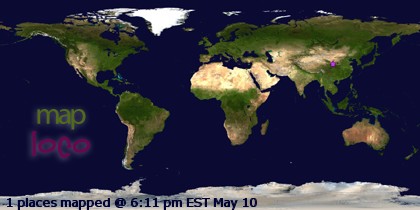As the weeks go by here in Andalucia, the relevance of the following anecdote fades faster and faster. Be that as it may, I still want to share it with you all, as a way to sew up my Castilla y Leon experience and make way for more Andalucian thoughts and hijinks.
We return to the scene of the crime, as it were, in late July. After finishing a seemingly-cursed-but-ultimately-beautiful trip across the north coast, I spent a week at Vaughan Town, a volunteer English immersion camp where they did not pay me the 500 euros I would have earned at the camp-to-be of the summer but did supply room and board. It was a lovely five days filled with new friends, deep in the ruggedly empty mountains of Soria.
Before arriving in Soria, I spent quite a bit of time on public transport-- first a train from Bilbao to Palencia to collect my things, then a bus from Palencia to Madrid, and then another from Madrid to Soria. I've always enjoyed the looking-out-the-window aspect of overland travel (especially trains, which offer such interesting slice-of-life glimpses of small-town life), and there was a particularly rich, specific satisfaction to the view during these trips.
When I first arrived in Spain in September 2011, the endless fields of Castilla y Leon were dull and dead, almost burnt looking, after the brutal heat of August. I remember watching expanses of past-peak sunflower fields race by on my first bus ride up to Palencia and during my trip back down to Madrid for orientation at the beginning of October. The stalks in those fields were bent and broken, browned to a crisp, and they made me wish for the fresh green beauty I was sure had preceded the present circumstances. I think I even mentioned it here in my first entries.
In any case, as my year wound to a close, I got that wish. July was the height of sunflower season in north-central Spain, and it seemed like nearly every field was covered completely in a carpet of velvety green plants and accompanying plate-sized flowers, startling in their sunny hue. The image was especially affecting with the speed of train travel. Mile after mile, we raced past flowers by the acre, faces all turned at the same angle toward the sun (in Spanish sunflower is "girasol," which literally means "spinning with the sun.") The fields blurred into green green and gold streaks as we passed, the colors so much more intense, so much richer, than the wheat and corn that was already blanching gold in the long, dry summer.
The greater metaphor was not lost on me: here I was, at once speeding toward my departure and managing to enjoy, albeit fleetingly, the very real flowering of a year's labor and adventures.
A few days later, I was back in the US.
**
A photo I did not take (not easy to get good images from aboard a train) that almost manages to capture the beauty and technicolor of Spanish sunflower fields
We return to the scene of the crime, as it were, in late July. After finishing a seemingly-cursed-but-ultimately-beautiful trip across the north coast, I spent a week at Vaughan Town, a volunteer English immersion camp where they did not pay me the 500 euros I would have earned at the camp-to-be of the summer but did supply room and board. It was a lovely five days filled with new friends, deep in the ruggedly empty mountains of Soria.
Before arriving in Soria, I spent quite a bit of time on public transport-- first a train from Bilbao to Palencia to collect my things, then a bus from Palencia to Madrid, and then another from Madrid to Soria. I've always enjoyed the looking-out-the-window aspect of overland travel (especially trains, which offer such interesting slice-of-life glimpses of small-town life), and there was a particularly rich, specific satisfaction to the view during these trips.
When I first arrived in Spain in September 2011, the endless fields of Castilla y Leon were dull and dead, almost burnt looking, after the brutal heat of August. I remember watching expanses of past-peak sunflower fields race by on my first bus ride up to Palencia and during my trip back down to Madrid for orientation at the beginning of October. The stalks in those fields were bent and broken, browned to a crisp, and they made me wish for the fresh green beauty I was sure had preceded the present circumstances. I think I even mentioned it here in my first entries.
In any case, as my year wound to a close, I got that wish. July was the height of sunflower season in north-central Spain, and it seemed like nearly every field was covered completely in a carpet of velvety green plants and accompanying plate-sized flowers, startling in their sunny hue. The image was especially affecting with the speed of train travel. Mile after mile, we raced past flowers by the acre, faces all turned at the same angle toward the sun (in Spanish sunflower is "girasol," which literally means "spinning with the sun.") The fields blurred into green green and gold streaks as we passed, the colors so much more intense, so much richer, than the wheat and corn that was already blanching gold in the long, dry summer.
The greater metaphor was not lost on me: here I was, at once speeding toward my departure and managing to enjoy, albeit fleetingly, the very real flowering of a year's labor and adventures.
A few days later, I was back in the US.
**
A photo I did not take (not easy to get good images from aboard a train) that almost manages to capture the beauty and technicolor of Spanish sunflower fields


